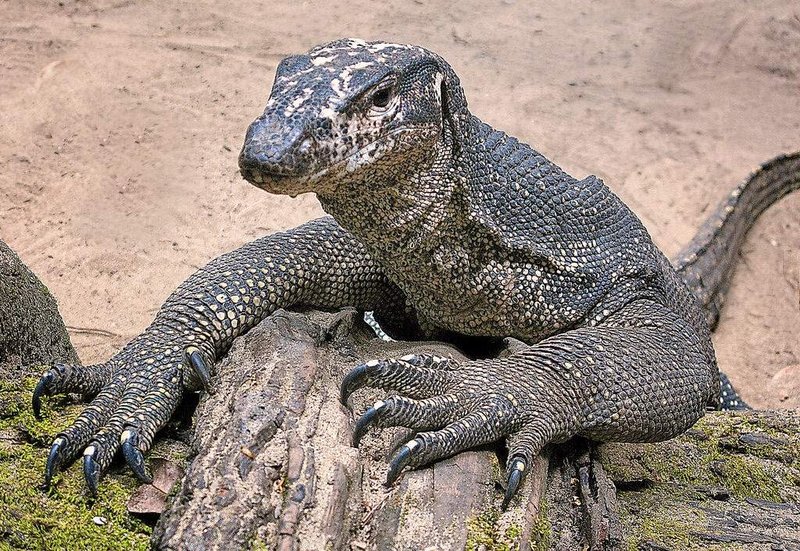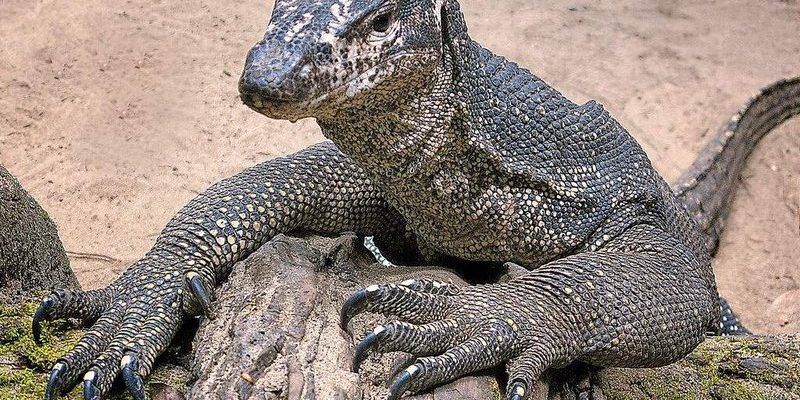
You might be wondering what makes monitor lizards stand out among their reptilian cousins. Well, they have an array of unique characteristics and behaviors that set them apart. From their impressive size to their diverse habitats, monitor lizards are truly captivating animals. Let’s dive into some of the most fascinating facts about them!
1. They Come in Various Sizes
Monitor lizards are a diverse group, and their sizes can vary dramatically. Some species are small enough to fit in your hand, while others can grow to a staggering length of ten feet! For example, the Komodo dragon, the largest monitor lizard, can weigh over 150 pounds and reach impressive lengths. Just imagine standing next to one of these formidable creatures!
On the smaller side, the savannah monitor typically grows about three feet in length. This variation in size allows monitor lizards to thrive in different environments, from dense forests to arid deserts. Their adaptability is a big reason why they’ve spread across Africa, Asia, and parts of Australia. Isn’t it fascinating how size can play a role in survival?
2. They Are Incredible Hunters
Honestly, one of the most striking features of monitor lizards is their hunting prowess. These reptiles are skilled predators, using their keen senses to locate prey. They primarily feast on insects, small mammals, and birds. Some larger species even target deer or wild pigs!
How do they catch their dinner? Monitor lizards have strong jaws and sharp teeth, making it easy for them to grip and consume their prey. They’re also highly intelligent, often using stealth and patience to ambush unsuspecting animals. Imagine a tiger stalking its prey—that’s how a monitor lizard approaches its meals!
3. Their Tongues Are Like Snakes
When it comes to those long tongues, you might think of a snake. Monitor lizards share this unique trait, using their forked tongues to pick up scents in the air. This helps them navigate their surroundings and find food. It’s like having a built-in GPS system!
Here’s the thing: monitor lizards can flick their tongues in and out rapidly. This action allows them to collect scent particles, helping them track prey or avoid potential dangers. It’s one of those cool adaptations that make them stand out in the reptile family!
4. Some Species Are Venomous
You might be surprised to learn that certain monitor lizard species possess venom. The Komodo dragon is the most famous of these, featuring venomous saliva that can infect its prey and cause severe illness. They have sharp teeth that deliver this venom, making them even more dangerous.
The venom contains bacteria that can lead to serious infections if left untreated. This adaptation allows the Komodo dragon to take down prey much larger than itself over time. While not all monitor species are venomous, it’s a fascinating aspect of their biology that adds to their allure.
5. They Have Unique Social Behaviors
Monitor lizards are not just loners. While many spend a lot of time alone, some species exhibit social behaviors, especially during mating season. For instance, male monitors will often engage in displays of strength and dominance to attract females. Picture a dance-off between two lizards!
During these competitions, they may rise up on their hind legs and grapple with one another. Despite their tough exterior, some species can be surprisingly sociable. They may bask together or even establish a hierarchy when living in groups. Isn’t it interesting to think about how these reptiles have their own social rules?
6. Their Habitats Are Diverse
Monitor lizards don’t just thrive in one type of environment; they can adapt to many! You’ll find them in various habitats, including forests, grasslands, and even coastal regions. Their ability to thrive in so many places is one reason they’ve become so widespread.
For example, the Mangrove monitor lives in coastal areas and is an expert swimmer, while the Timor monitor prefers dry savannahs. Depending on their environment, they’ve developed unique behaviors and adaptations. It’s like each species is a little piece of nature’s puzzle, fitting perfectly into its surroundings.
7. They Are Proficient Swimmers
Did you know that many monitor lizards are exceptional swimmers? Unlike some reptiles that shy away from water, monitors often take a dip to cool off or hunt for food. The Asian water monitor, for instance, is known for its swimming abilities and is often found near rivers and lakes.
They use their strong limbs and flattened tails to propel themselves through the water with ease. While some might think of lizards only as land creatures, monitor lizards remind us that they can thrive both on land and in water. Just think of them as the ultimate dual-threat animals!
8. Monitors Have Impressive Lifespans
Here’s the thing: monitor lizards can live a surprisingly long time! With proper care in captivity, some species can live over 20 years. This longevity stems from their adaptability and the ability to evade predators.
In the wild, however, their lifespan can be cut short by various factors, including hunting and habitat loss. Understanding their life cycle and the threats they face helps us appreciate these remarkable creatures even more. It’s a reminder of the importance of conservation efforts to protect their future.
9. They Have Distinct Color Patterns
Monitor lizards come in an array of colors and patterns, each suited to camouflage within their environment. For example, the black-throated monitor features striking yellow or cream-colored spots. This helps them blend in with both their surroundings and potential prey.
Those colors aren’t just for show; they also convey important social signals. When monitors display their vibrant hues, they may be communicating with other lizards or signaling their health and vitality. It’s nature’s way of dressing up!
10. They Play a Role in Ecosystems
Finally, let’s talk about the role monitor lizards play in their ecosystems. As both predators and prey, they help maintain balance in their habitats. By controlling populations of smaller animals, they contribute to a healthy ecosystem.
Moreover, monitor lizards also serve as food for larger predators like birds of prey and other carnivores. Their presence in the food chain highlights the interconnectedness of life and the importance of biodiversity. It’s amazing how even the smallest creatures can have a significant impact on their surroundings!
In conclusion, monitor lizards are more than just fascinating reptiles; they are integral players in their ecosystems with impressive adaptations and behaviors. Understanding these unique creatures adds a layer of appreciation for the natural world. So, the next time you see a monitor lizard, take a moment to marvel at the incredible life it leads!

